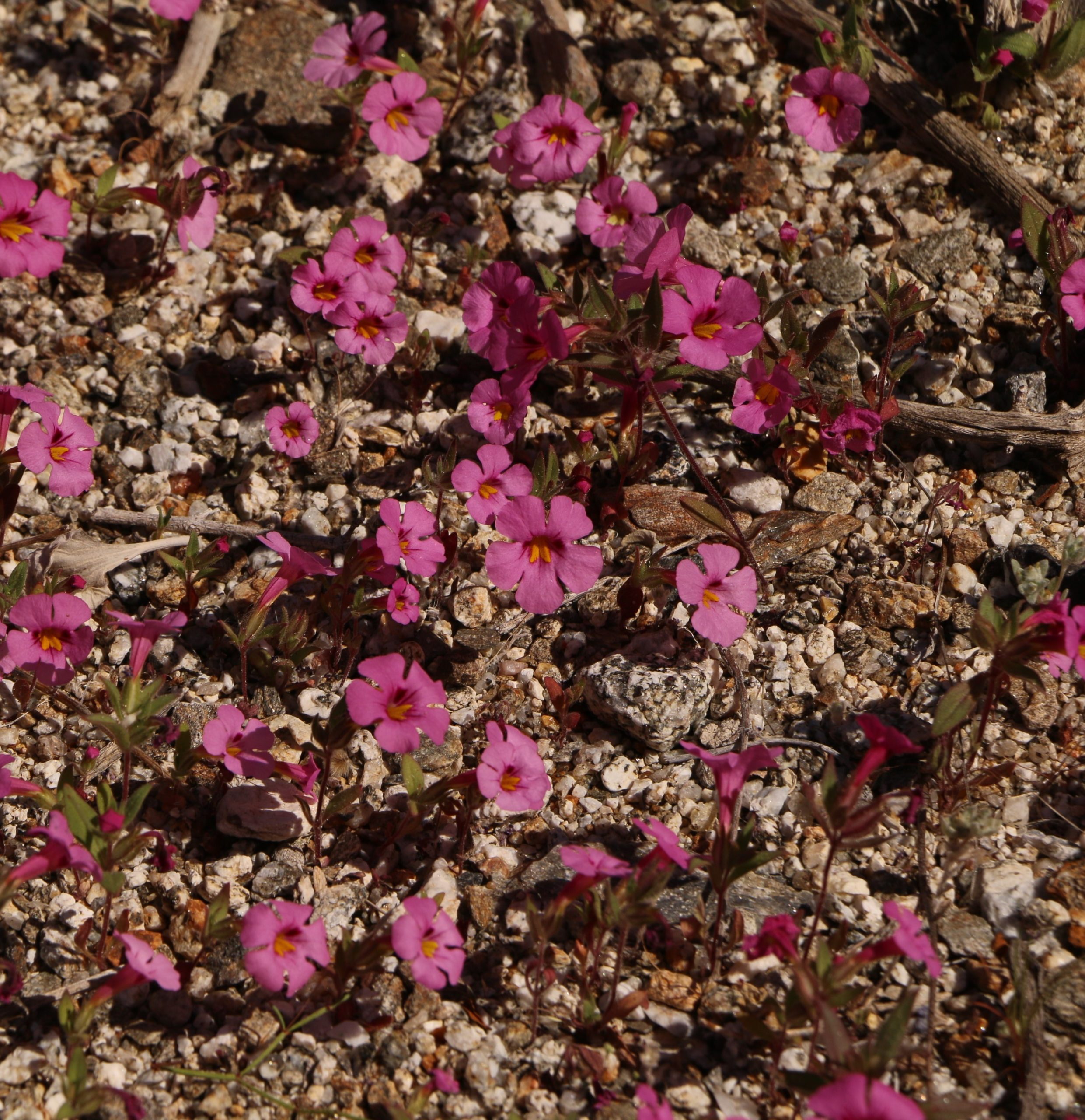I took a wonderful trip to the deserts of California for the spring wildflower bloom. I’ve spent very little time in deserts so it was exciting to see the flora, fauna, and beautiful landscapes. The first desert we visited was the Colorado Desert, which is a subsection of the Sonoran Desert. The Colorado Desert is characterized by its low elevation and by its the late summer and winter rainy periods.
One adorable flower I saw blooming in the Colorado Desert was the Bigelow’s monkeyflower or Diplacus bigelovii. Monkeyflowers are in the loopseed family or the Phrymaceae. Bigelow’s monkeyflower are tiny plants that have large pink flowers with yellow throats. In California, they are found in the southern inland region, commonly in the Colorado and Mojave Deserts (Califlora: Diplacus bigelovii). They are also found in Nevada, Arizona, and Utah (USDA Plant Profile: Diplacus bigelovii).
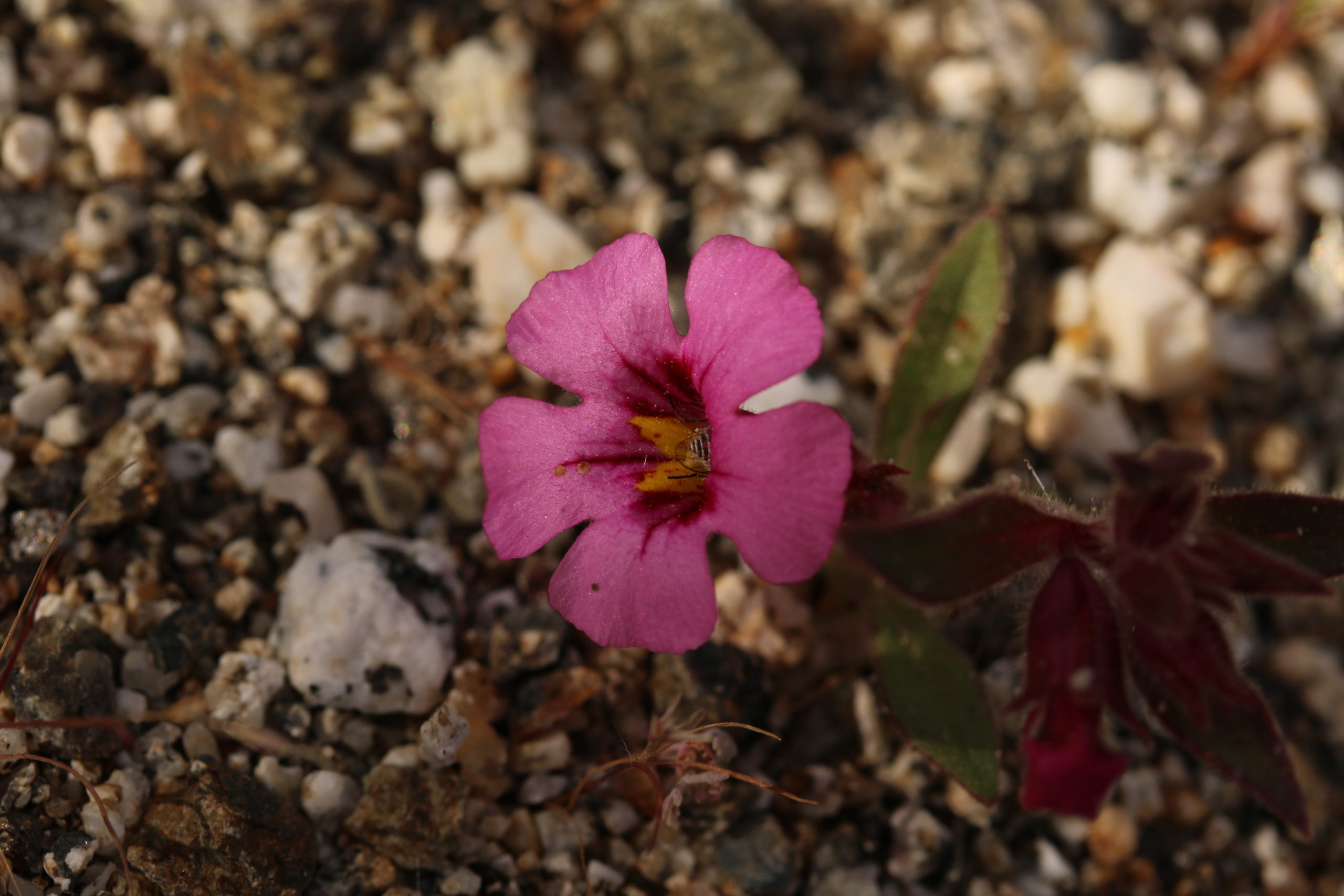
Bigelow’s monkeyflowers are identified by their pink flowers with yellow throats (this flower also has a pollinator resting inside!) (Diplacus bigelovii, Phrymaceae)
The Bigelow’s monkeyflower lives in scrublands, dry woodlands, and desert habitats. They are annuals, which means they must bloom and produce seed every year, which can be difficult in hot and dry conditions (Califlora: Diplacus bigelovii). They are often seen flowering in sandy washes in deserts.
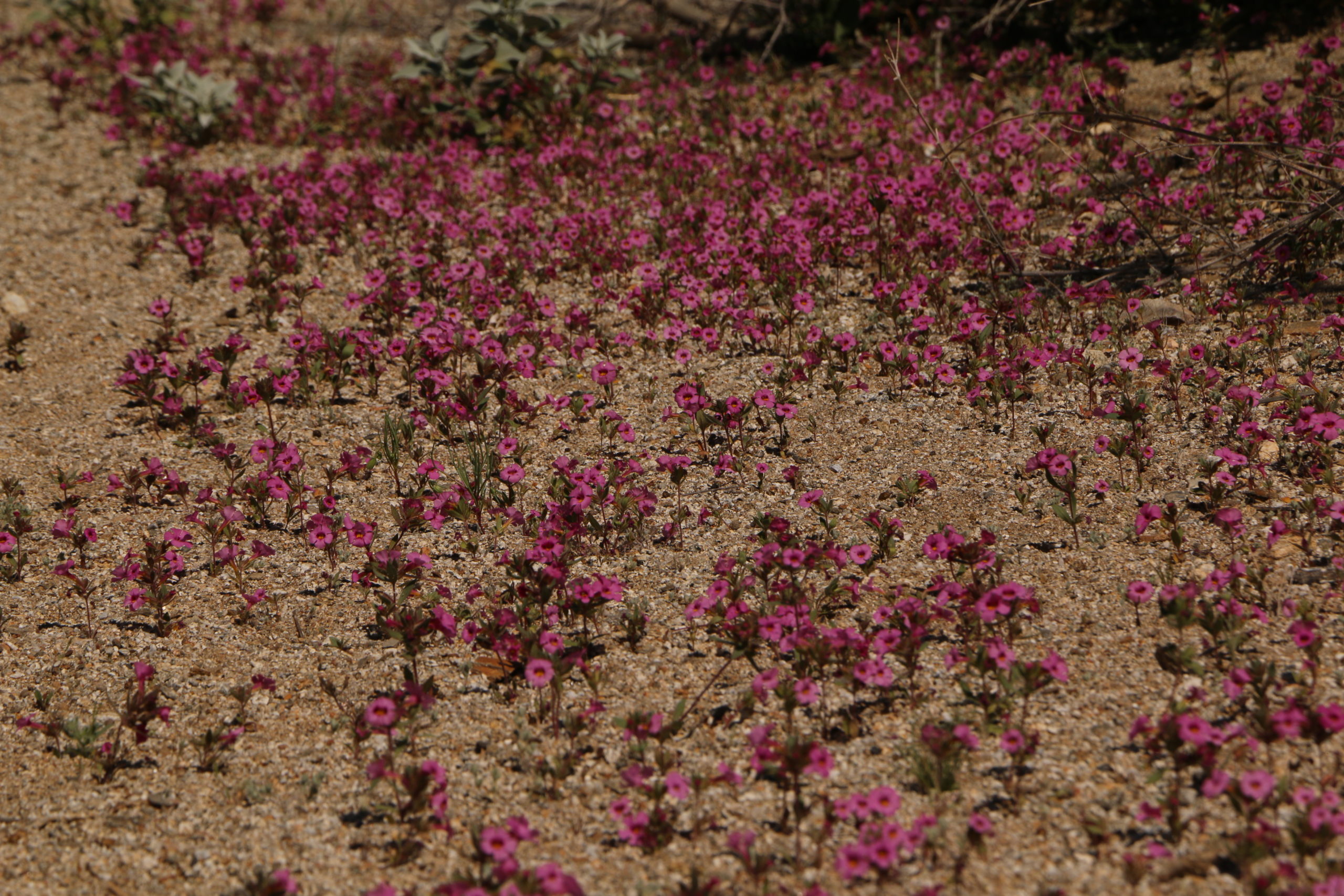
Bigelow’s monkeyflowers blooming along one edge of a sandy wash (Diplacus bigelovii, Phrymaceae)
There are two varieties of the Bigelow’s monkeyflower. Varieties have distinctive traits due to environmental and geographical isolation. Variety bigelovii has thinner leaves on the stem compared to the base of the plant. Additionally, the nodes (stem regions between leaves) are shorter closer to the flowers. Variety cuspidatus has leaves and nodes that are the same size across the whole plants (Jepson eFlora: Diplacus). All of the plants that I saw were var. bigelovii.
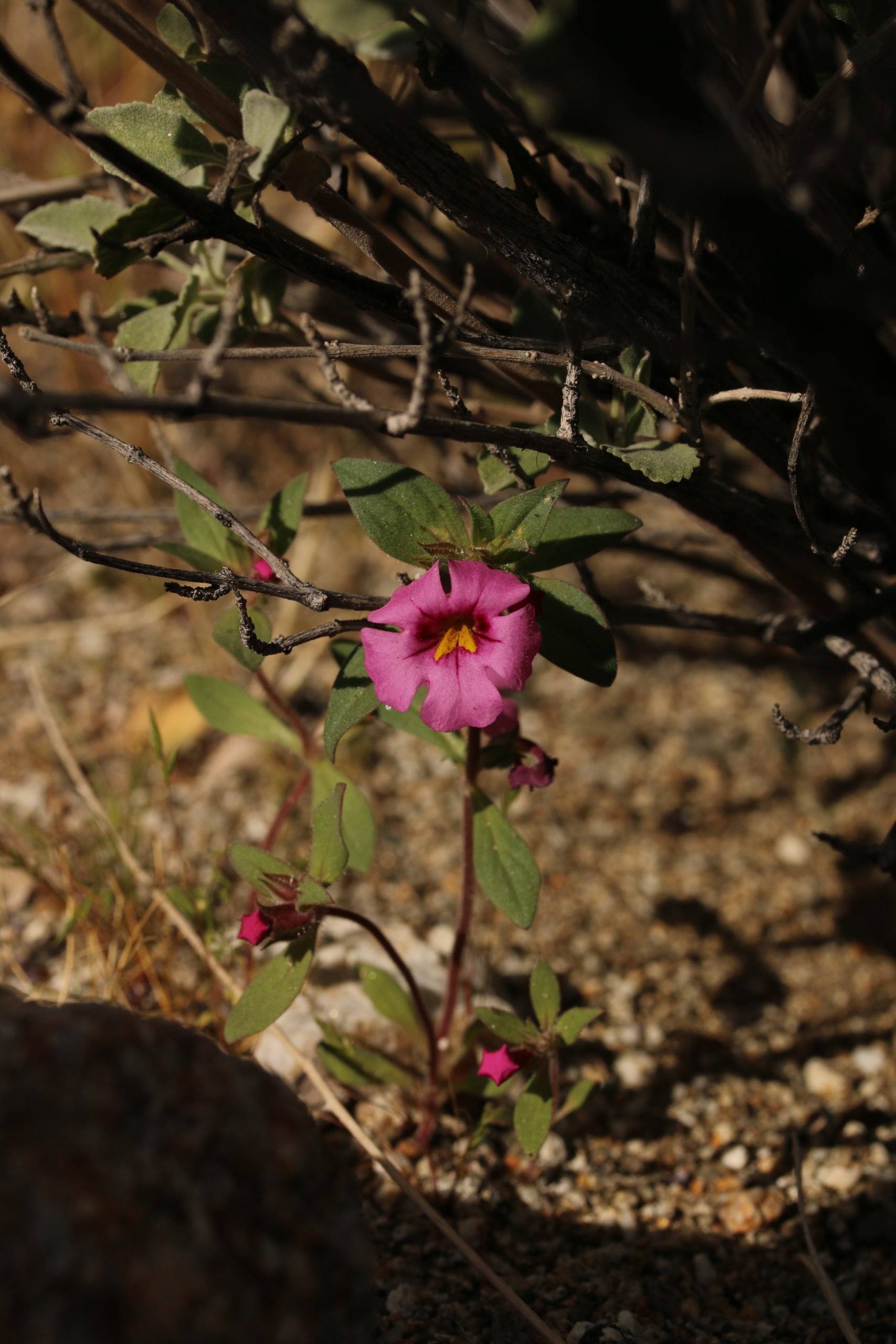
Variety bigelovii has thinner leaves on the stem compared to the base of the plant (Diplacus bigelovii, Phrymaceae)
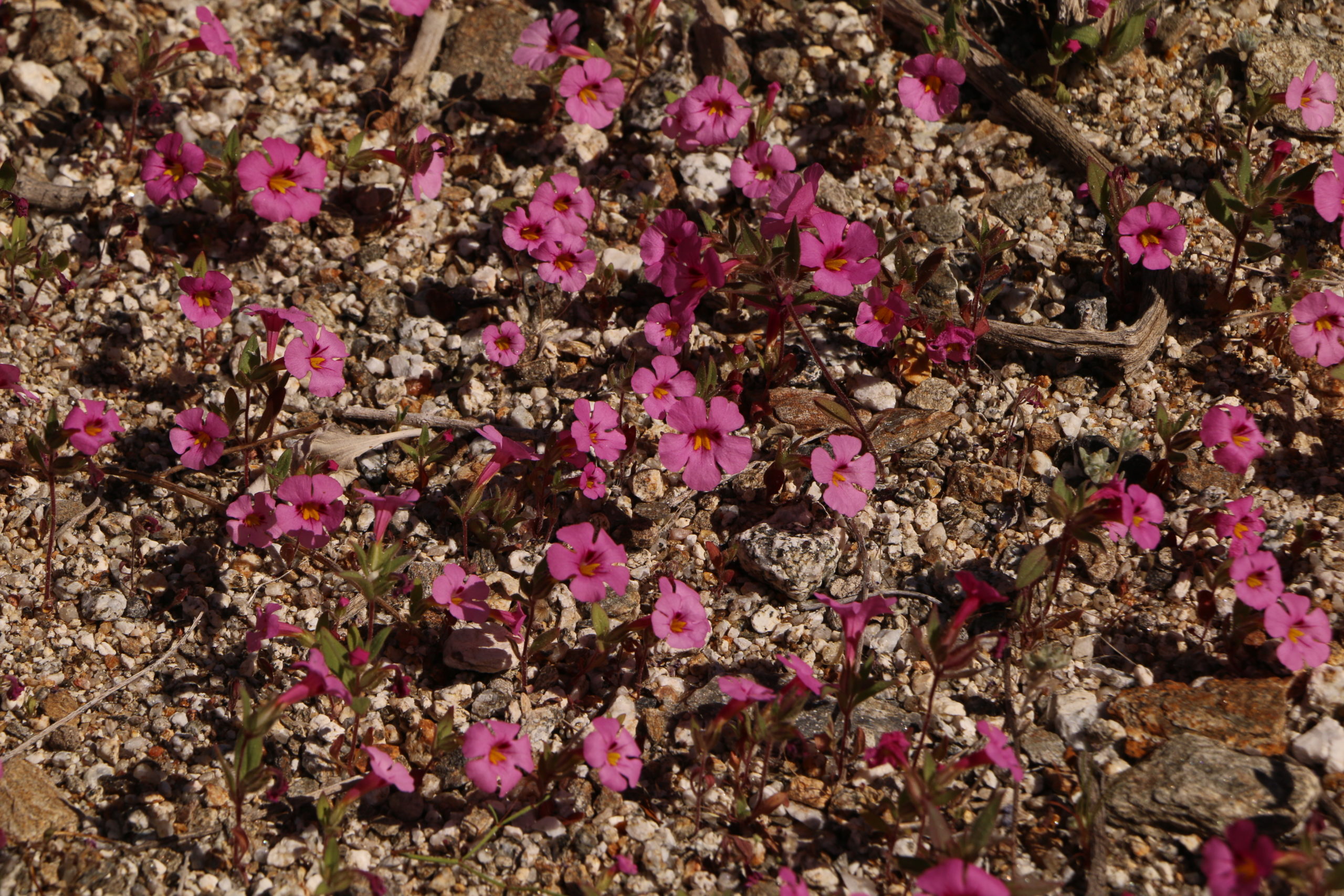
This beautiful cluster of Bigelow’s monkeyflowers show their short stature (Diplacus bigelovii, Phrymaceae)
